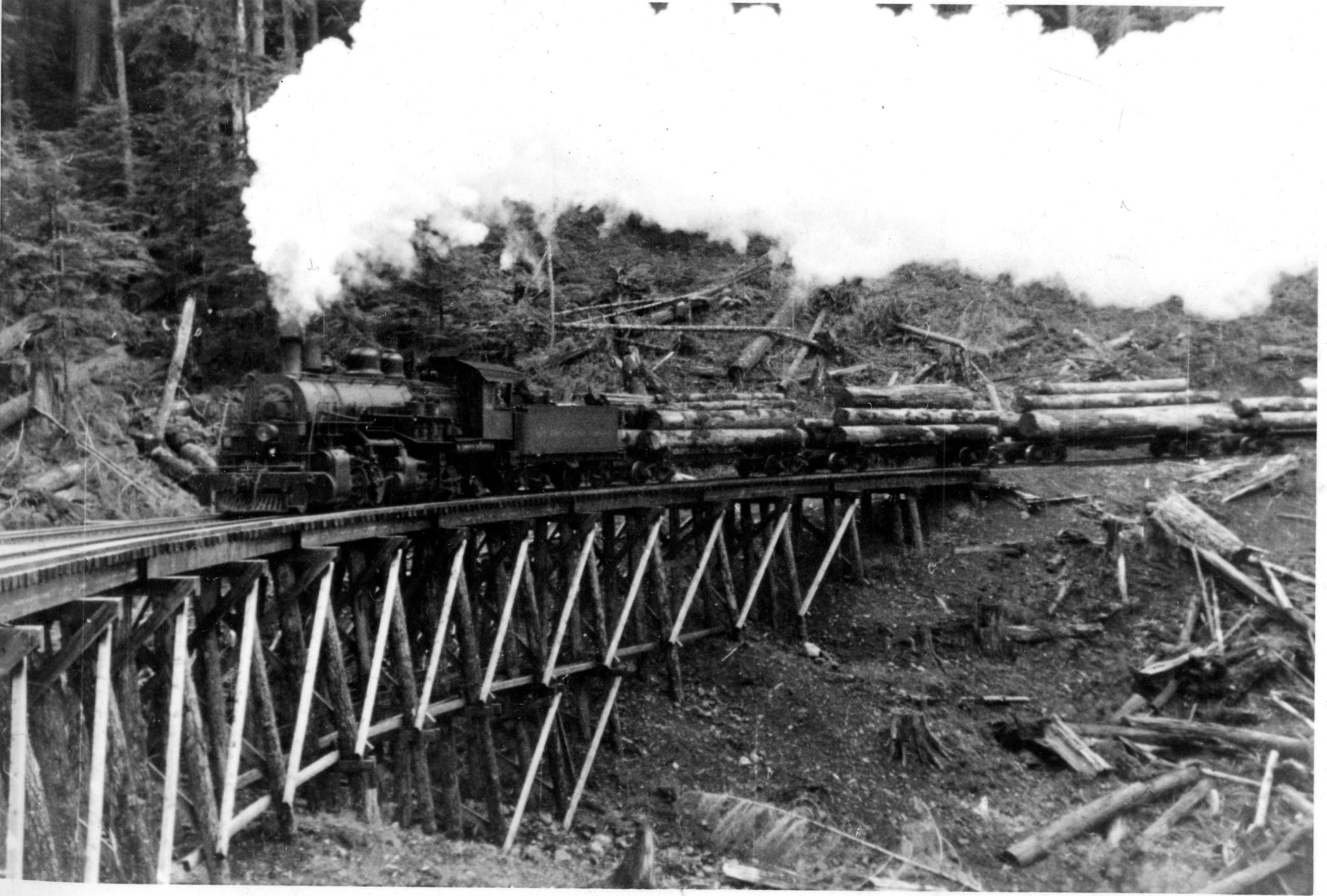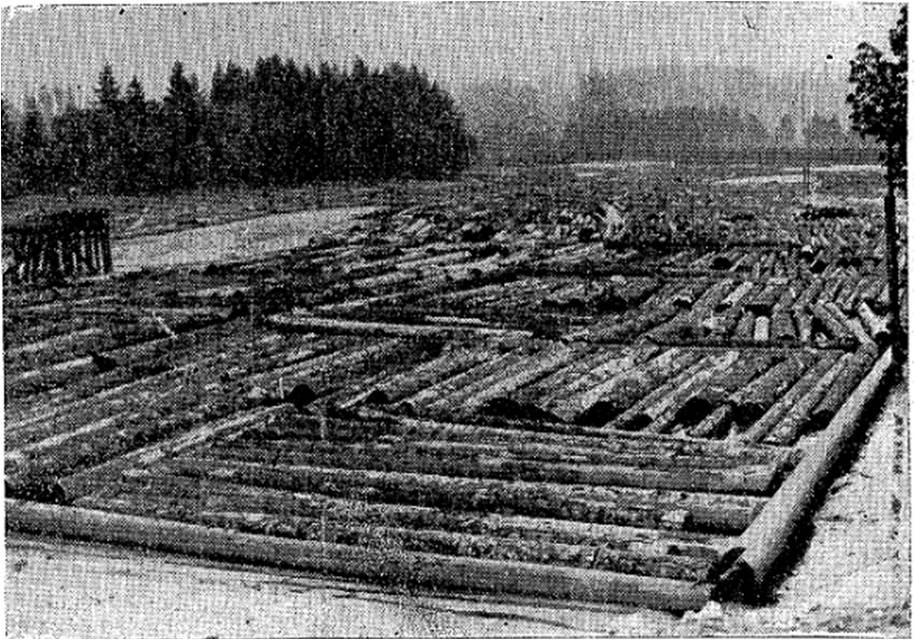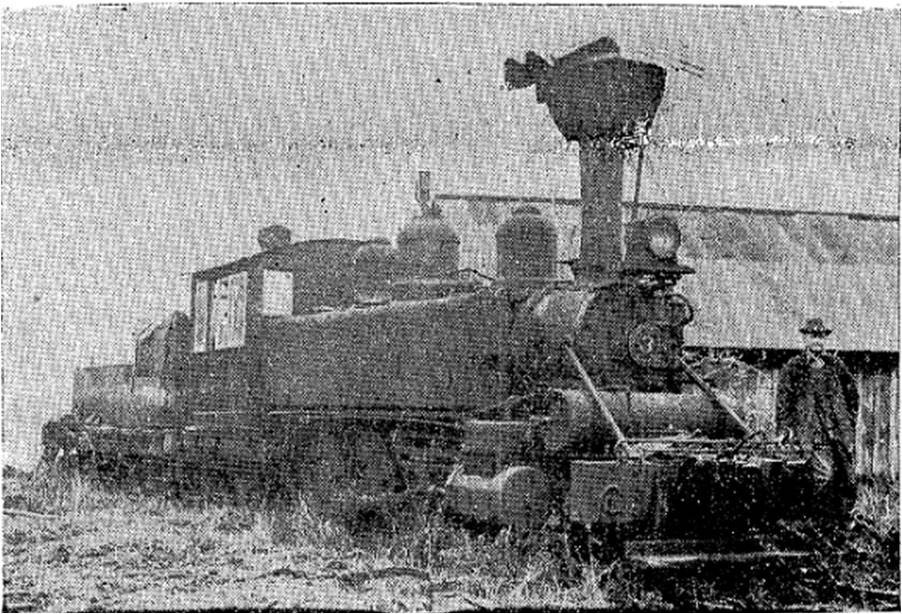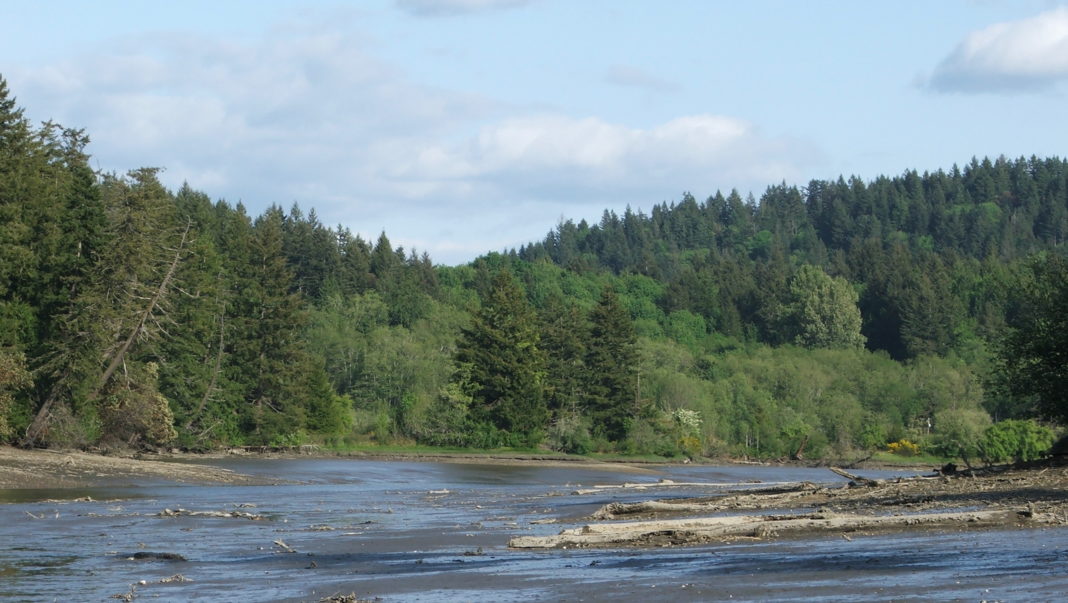Logging has historically been an important part of Thurston County’s economy. The Black Hills, now part of Capitol State Forest, was a longtime center of logging operations. Over the years many small as well as large companies logged this minor range of hills that span the border of Thurston and Grays Harbor counties. One of these companies was the Mud Bay Logging Company, which operated from 1910 to 1941.
 The Black Hills, which rise to 2,600 feet at their highest point, are over fifty million years old according to geological evidence. Their name derives from their dark appearance as seen from a distance. They were called “klahle” (black) by Native Americans living in the area. The trees, which gave the hills their dark appearance, attracted loggers after American settlement of the area.
The Black Hills, which rise to 2,600 feet at their highest point, are over fifty million years old according to geological evidence. Their name derives from their dark appearance as seen from a distance. They were called “klahle” (black) by Native Americans living in the area. The trees, which gave the hills their dark appearance, attracted loggers after American settlement of the area.
The Mud Bay Logging Company was founded by Mark H. Draham in 1910. Draham, who came to Washington Territory in 1877 from Canada, quickly became a regional leader in the timber industry. As early as 1904, he began purchasing timberland in what would become the Mud Bay Company’s lands. He later consolidated his holdings as the Draham Timber Company and in 1909 began building logging railroad lines through his lands. On March 29, 1910, the Mud Bay Logging Company was officially incorporated with Draham, George Long and Dan O’Leary as incorporators and trustees.
The company put its headquarters at the end of Eld Inlet, locally known as Mud Bay, because of its extensive tidelands during low tide. Thus, the men named their business after Mud Bay. The company was also partly owned by the Weyerhaeuser Timber Company, a business still in existence. Draham was president of the Mud Bay Logging Company from 1910 until his death in 1930. Fellow founder, George Long, died a few years later, and Dan O’Leary acted as president until the company’s dissolution in 1941.

In December of 1910, the company began logging operations. It ran a series of logging camps for workers and their families. These soon developed into “sanitary camps” because they offered running water and other sanitary facilities that many logging camps lacked. The Mud Bay Logging Company camps were connected to each other and to logging areas by a network of railroads. From 1911 to 1918, this logging railroad was officially operated by the Thurston County Railway Company. At first it was independent but associated with the Mud Bay Logging Company. Later, the railroad business was absorbed by the logging company. In the 1930s the company closed the camps and had its workers commute by railroad speeders to the woods.
Logging in the Black Hills was very difficult. The company used steam donkey engines and later diesel equipment to reach the trees on steep inclines. Heavy snow could close down operations for weeks, sending hundreds of workers into temporary unemployment. Forest fires were also a constant threat. Shipping their logs by railroad, they dumped them into Mud Bay. Tugboats towed the logs in giant booms to distant sawmills, including the Weyerhaeuser Mills in Everett.

The Mud Bay Logging Company employed thousands of workers over the years. It began with about 125 workers in 1910 and, at its height of operations between 1927 and 1929, employed around 450 people. Workers were mostly young, single immigrant men, especially during the early years. Logging was a physically demanding and dangerous job, making accidents common. In 1918 the company (along with other big, regional logging operations, including Mason County, Simpson, Cushman, and Potlach Logging Companies) adopted the eight-hour workday.
After thirty-one years of operation, the Mud Bay Logging Company closed business and liquidated its holdings in 1941. They had logged every tree that they could on their lands. The company dismantled their railroad track and sold off equipment. Their railroad trestles over valleys were blown up by the United States military in 1945 as part of explosive experiments. Over the decades the company logged 26,000 acres and produced 1.5 billion board feet of timber, much of it old growth.

The company’s lands eventually passed into the hands of the state government. The Civilian Conservation Corps, a federal Great Depression work relief organization for young men, and later groups worked tirelessly to reforest the Black Hills. Except for a section of the hills owned by the Weyerhaeuser Company, the area is now part of the Capitol State Forest, operated by the Washington State Department of Natural Resources, which is dedicated to balancing sustainable logging with recreation and preserving the environment.
The Mud Bay Logging Company has clearly passed into history. Traces of the logging railroad lines, however, still remain visible. Some have been made into truck roads in the Black Hills, while another can be viewed at McLane Creek Nature Trail.
For more information about the many logging railroads that once crisscrossed Thurston County, see James S. Hannum’s Gone But Not Forgotten: Abandoned Railroads of Thurston County, Washington, 2nd edition (2012). Learning about Thurston County’s logging history reminds us how significant this industry has been. It remains important in the area today, though modified to meet a changing economy and increased concerns for the environment.




















































